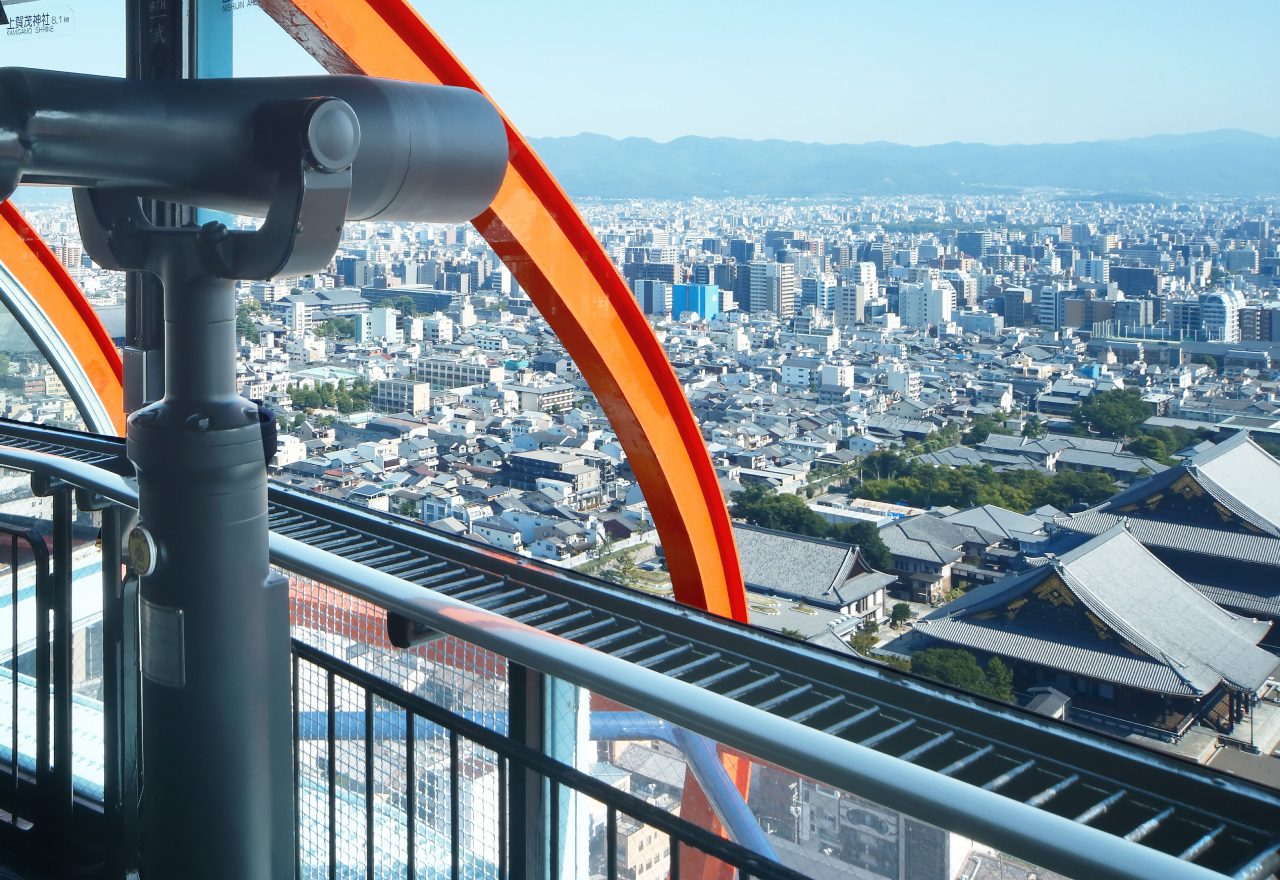
Observation Deck
The 100-meter observation deck is the highest in the city of Kyoto and provides picturesque panoramic views of the former capital.
Enjoy the changing scenery with the four seasons and different times of day that offers something new with each visit.
- Observation Deck information
- World Heritage sites and National Treasures visible from Nidec Kyoto Tower
Observation Deck information
-
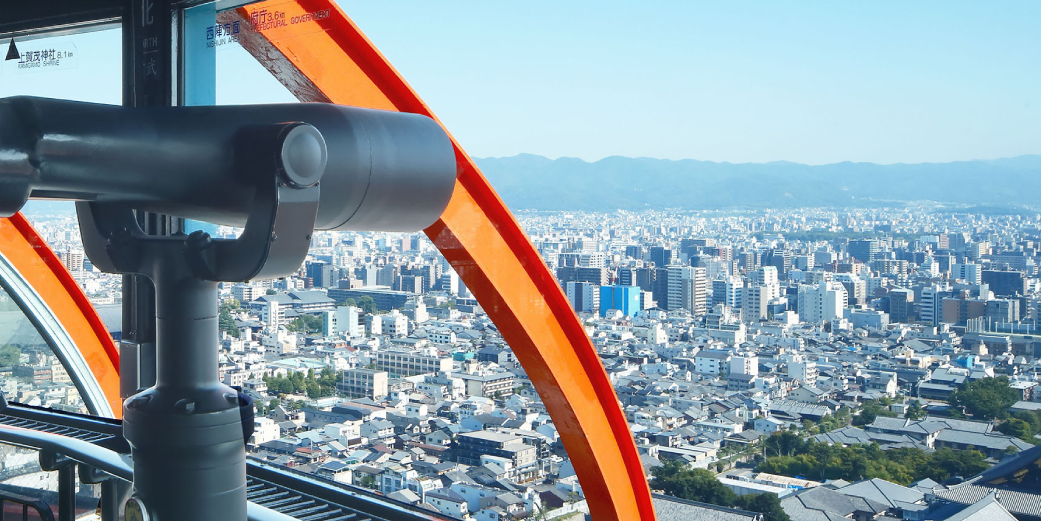
Free telescopes
The telescopes set up on the 5th floor observation deck are available for your use free-of-charge. Looking through them affords a view of Kyoto's famous charms from 100 meters up. There are lots of historical sites to see, and on clear days you can even get a glimpse of Osaka in the distance!
Enjoy spectacular views you can't get anywhere else at Nidec Kyoto Tower.
World Heritage sites and National Treasures
visible from Nidec Kyoto Tower
World Heritage Sites and National Treasures seen from 100 meters up Kiyomizu-dera Temple, To-ji Temple, Chion-in Temple...
many of Japan's most famous temples and shrines are located here in Kyoto.
Looking down from the 100-meter observation deck lets you view familiar sites like these from a new perspective.
Enjoy some of the World Heritage sites and National Treasures visible from Nidec Kyoto Tower!
-
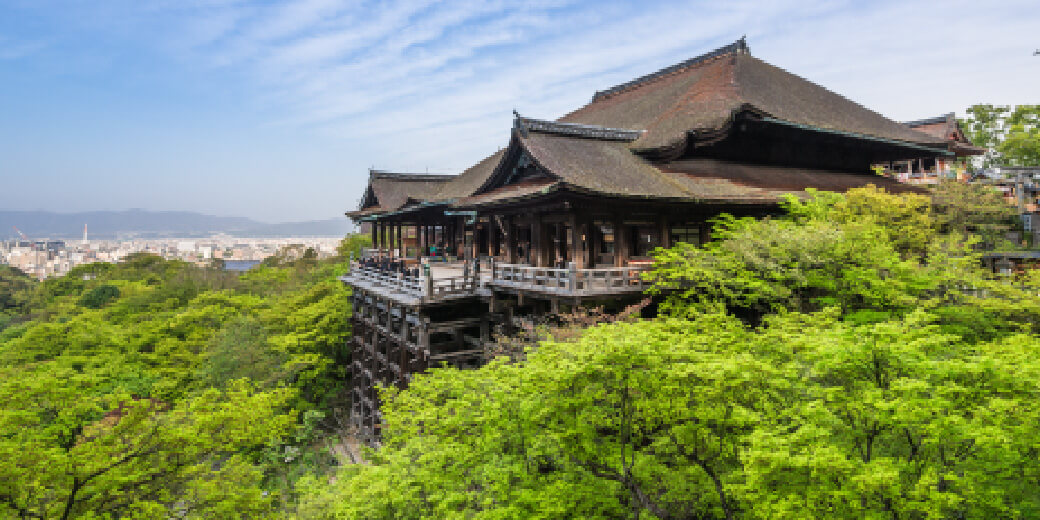 World Heritage sites visible from Nidec Kyoto Tower
World Heritage sites visible from Nidec Kyoto Tower
-
-
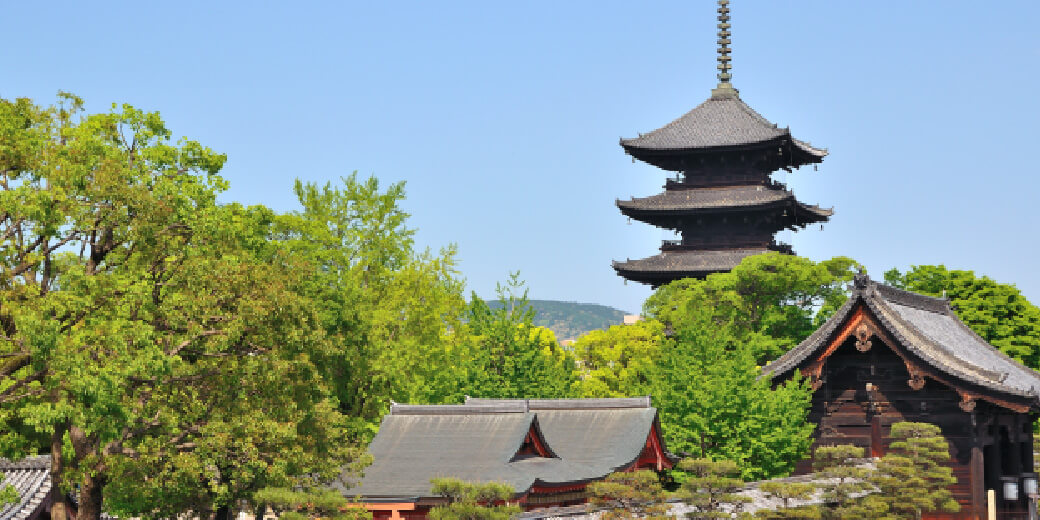
Toji
Toji is the head temple of the Shingon sect of Buddhism. It was built to the east of the Rajomon Gate in 796 as a spiritual protection for the nation. The five-storied pagoda (National Treasure) within the Toji Temple grounds was built by Tokugawa Iemitsu, and at 55 meters is known as the tallest pagoda in Japan.
-
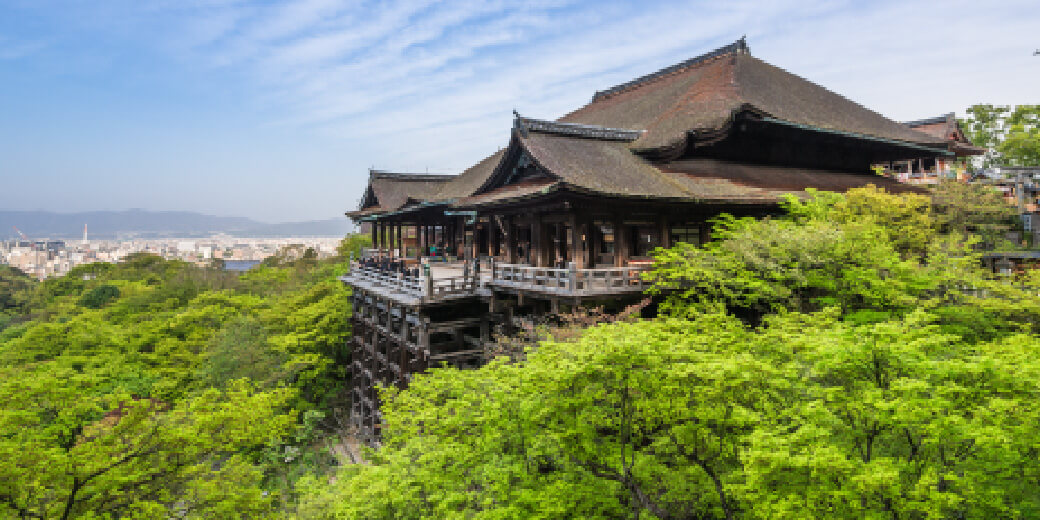
Kiyomizu-dera Temple
One of Kyoto's most famous tourist attractions, alongside the likes of Arashiyama. The main building (National Treasure), also known as the "Kiyomizu Stage," is perched 18 meters up on a cliff and is clearly visible from Observation Deck.
-
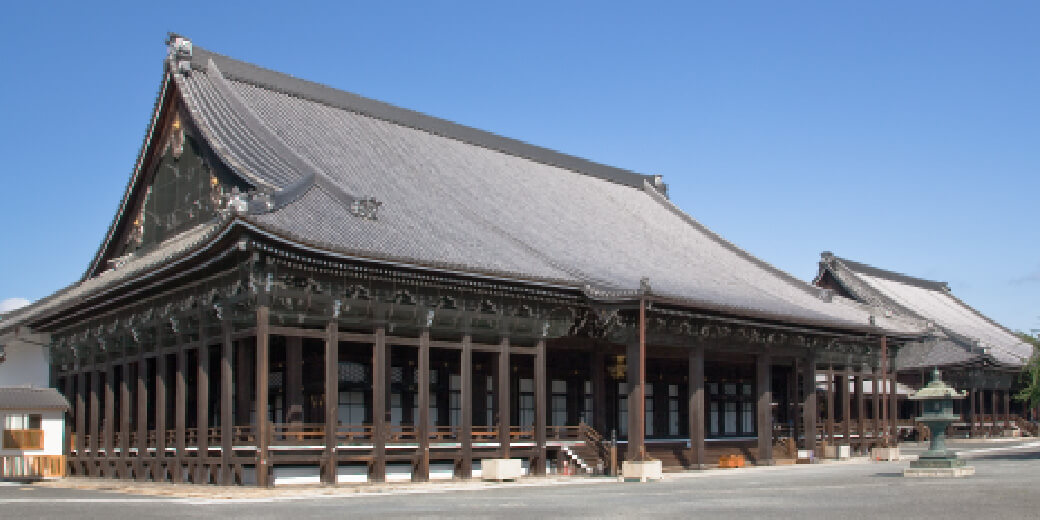
Hongwanji (World Heritage Site)
Headquarters of the Hongwanji denomination of Jodo Shinshu Buddhism (Jodo Shinshu Hongwanji-ha). There are a number of buildings expressing Momoyama period culture that are designated National Treasures within the grounds, such as the Hongwanji North Stage, the oldest surviving Noh performance stage in Japan, and the Karamon Gate. Since the temple is only about 15 minutes away from Nidec Kyoto Tower on foot, you can easily walk there for a visit.
-
-
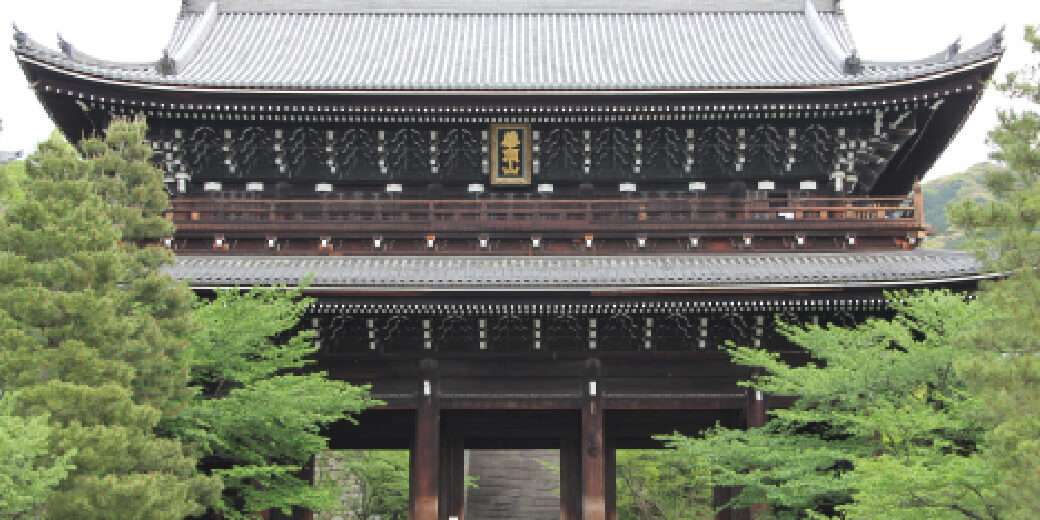 National Treasures visible from Nidec Kyoto Tower
National Treasures visible from Nidec Kyoto Tower
-
-
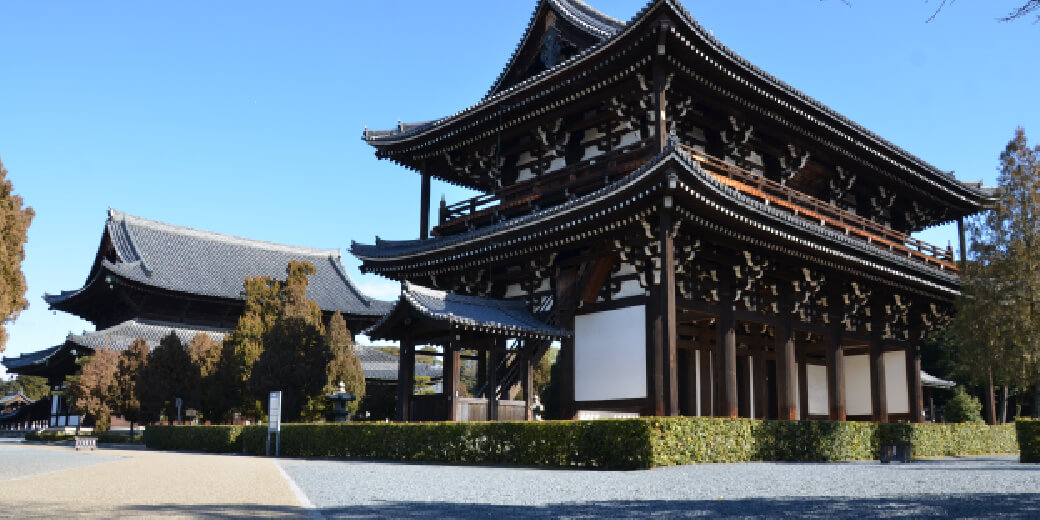
Tofukuji The Sanmon gate
This structure inside the Tofukuji grounds is a National Treasure built in the Muromachi period (14th century). It incorporates architectural elements of Zenshuyo (Chinese), Wayo (Japanese), and Daibutsuyo (Indian) styles and is the oldest and largest National Treasure found at any Zen Buddhist temple. Looking down from Kyoto Tower, you can even see the Rakunan area of Kyoto through the second floor of the gate structure (normally closed to the public).
-
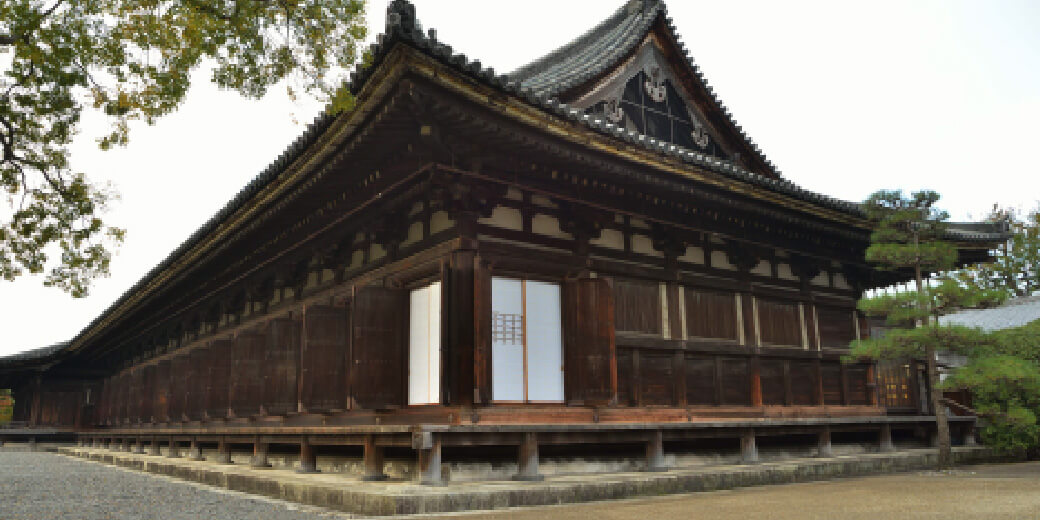
Sanjusangendo
Sanjusangendo is famous for the 1,001 statues of Kannon, the 1,000-armed goddess of mercy. It was built in 1164 by Taira no Kiyomori in a corner of the grounds of Hojuji-dono Palace, the seat of the imperial government under Emperor Go-Shirakawa, which was located at the foot of Mt. Toribe (now known as Amidagamine). This historical building has been preserved for over 700 years, with four major renovations, first in the Muromachi period (14th century), then in the Momoyama (16th century), Edo (1603 - 1868), and Showa (1926 - 1989) periods. *Image provided by: Myoho-in Temple
-
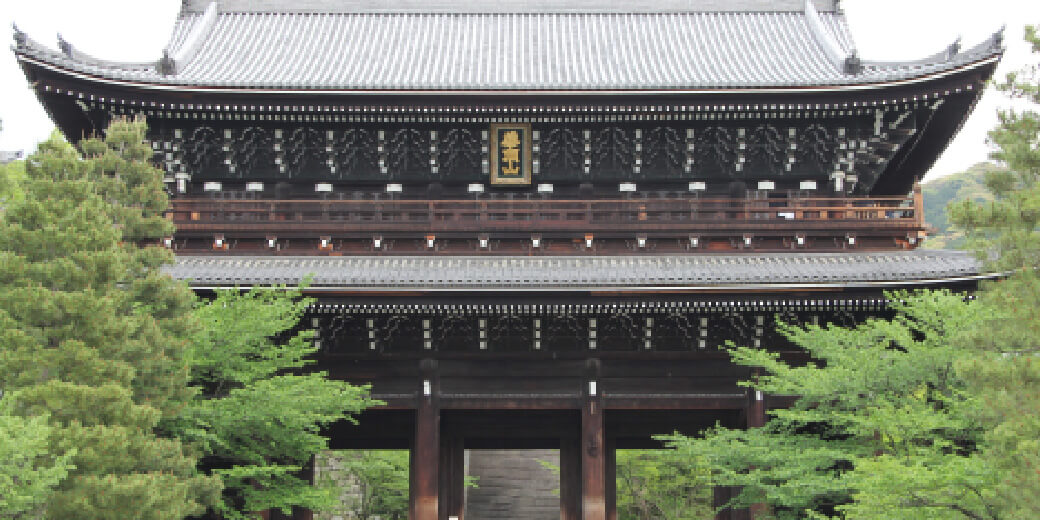
Chion-in Sanmon
"Chion-in" is the head temple of the Pure Land sect of Buddhism and is located in the Higashiyama Ward in the city of Kyoto. The Sanmon Gate is said to be the largest surviving wooden structure of its kind in Japan.
In addition to the Sanmon Gate, there are also many other buildings in the temple that are designated as National Treasures and Important Cultural Properties, such as the Mieido, Seishido, Shuedo, and Daishoro structures.
-



